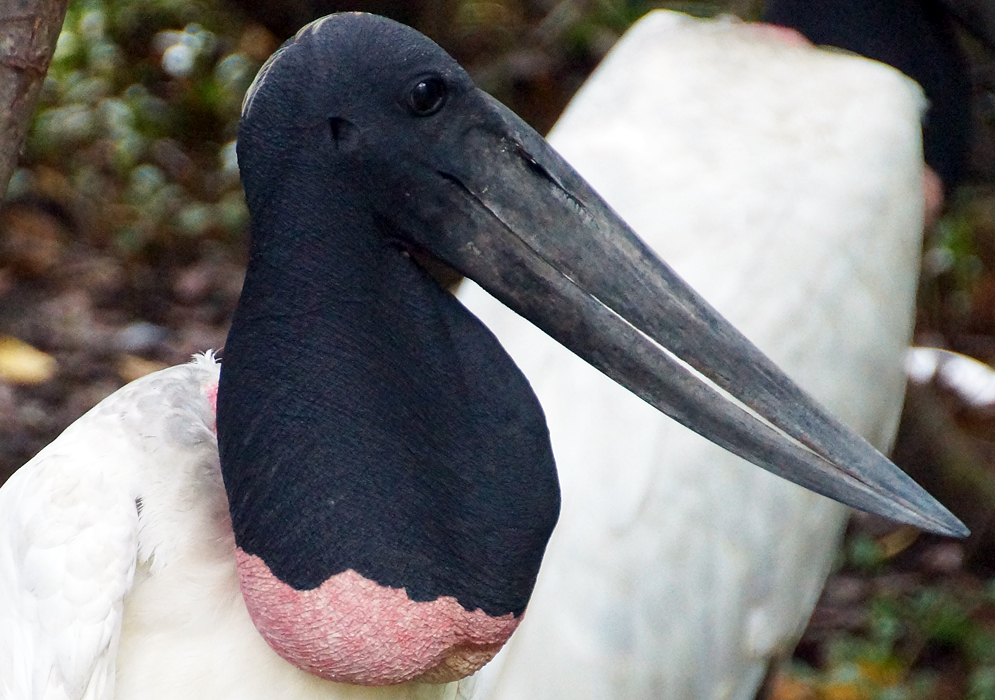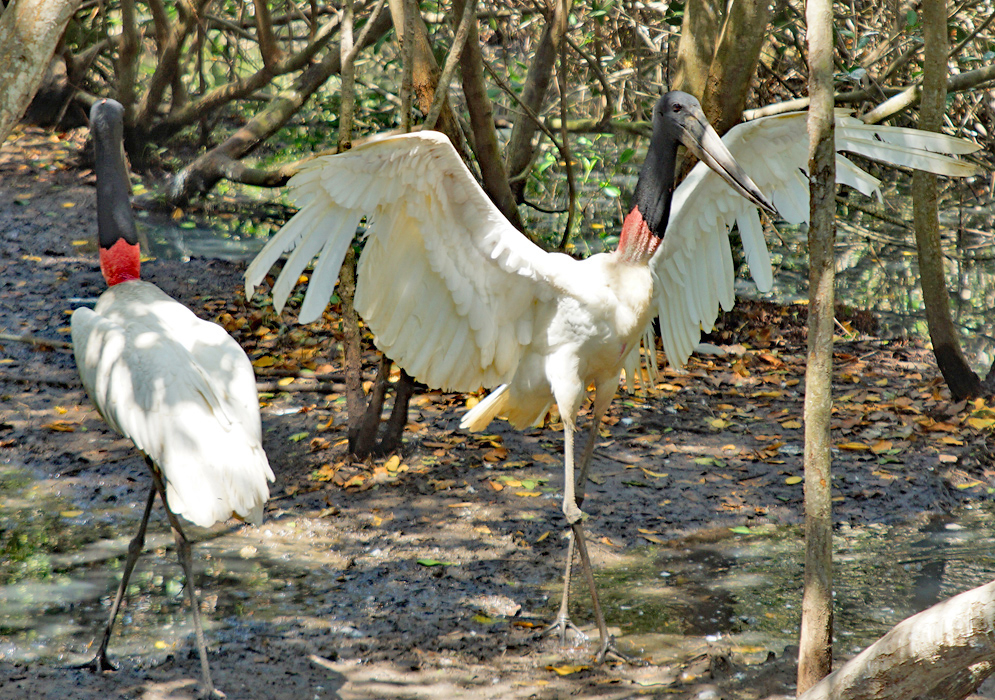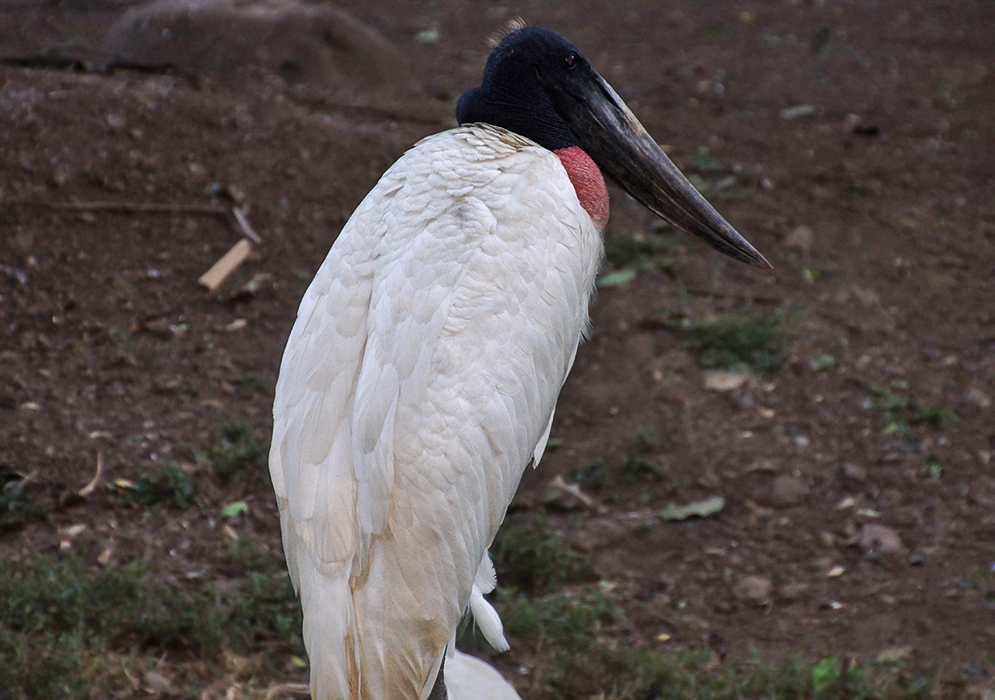This post has 11 Simple Fields-fields attached. Show fields.

The Jabiru is a stork species found in the Americas, with its range extending from Mexico to Argentina, but it is notably absent west of the Andes. This bird occasionally wanders into the United States, particularly Texas, and has been reported as far north as Mississippi. The Pantanal region of Brazil and the Eastern Chaco region of Paraguay are areas where the Jabiru is most commonly found. It is notable for being the tallest flying bird in South and Central America, with a height rivaling the flightless greater rhea, and it possesses the second-largest wingspan on the continent after the Andean condor. Adult Jabirus typically measure 47–55 inches in length, have a wingspan of 7.5–9.2 feet, and weigh between 9.5–19.8 pounds. Males, which are about 25% larger than females, average around 15.2 pounds, while females average 11.5 pounds. Their distinctive appearance includes mostly white plumage, with a black, featherless head and upper neck, and a red stretchable pouch at the base. This species is a powerful and graceful flier, despite sometimes appearing ungainly on the ground. The Jabiru lives in large groups near rivers and ponds, feeding on a variety of creatures including frogs, fish, snakes, snails, insects, and other invertebrates. It also consumes carrion, particularly during dry spells, contributing to the maintenance of water quality. These birds are opportunistic feeders, known to consume house mice during population explosions in agricultural areas. Jabirus feed by holding their open bill at a 45-degree angle to the water and detecting prey more through tactile sensation than vision. They have been observed engaging in kleptoparasitism, attempting to steal food from smaller storks. Jabirus are solitary nesters, often seen in pairs outside the breeding season, suggesting a lifelong pair bond. Their nests are large stick platforms built in tall trees, reused and enlarged each season. These nests can be up to 3.3 feet wide and 5.9 feet deep, with the birds being more territorial during breeding. The average lifespan of a Jabiru is 36 years. The Jabiru is classified as "Least Concern" by the IUCN.







